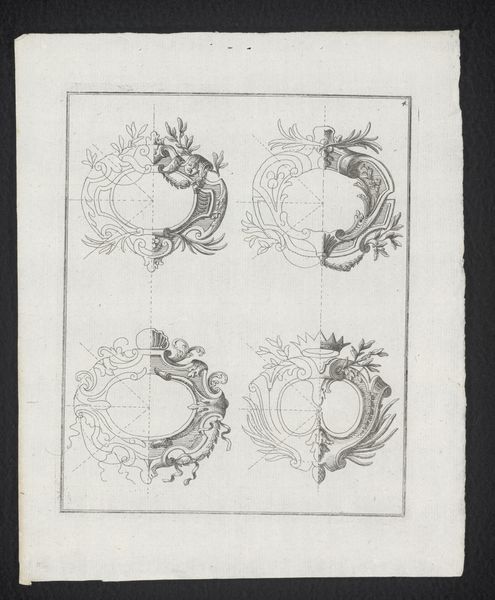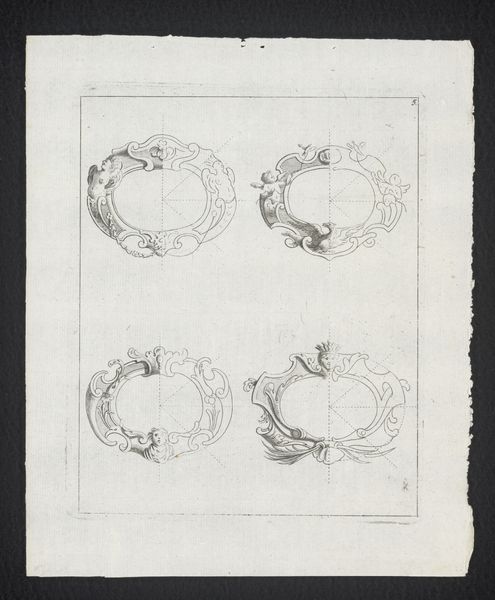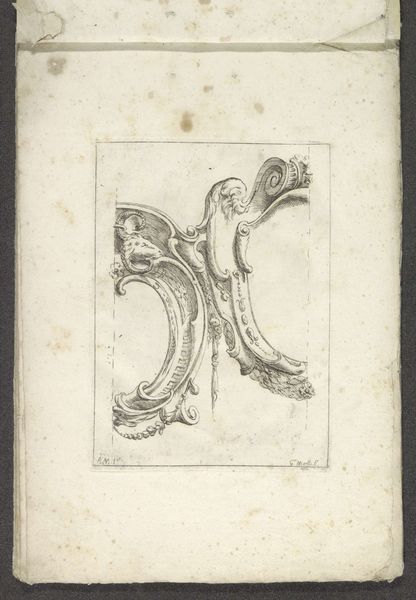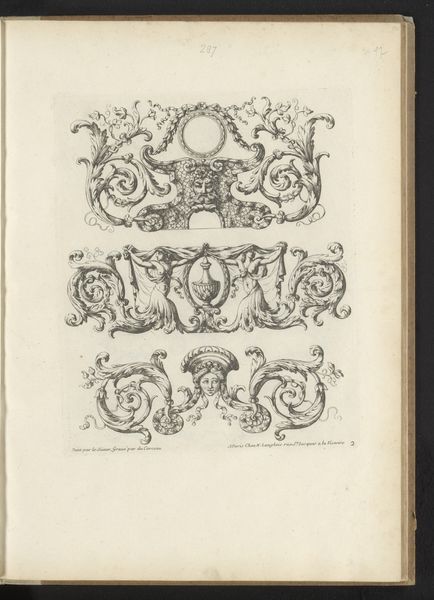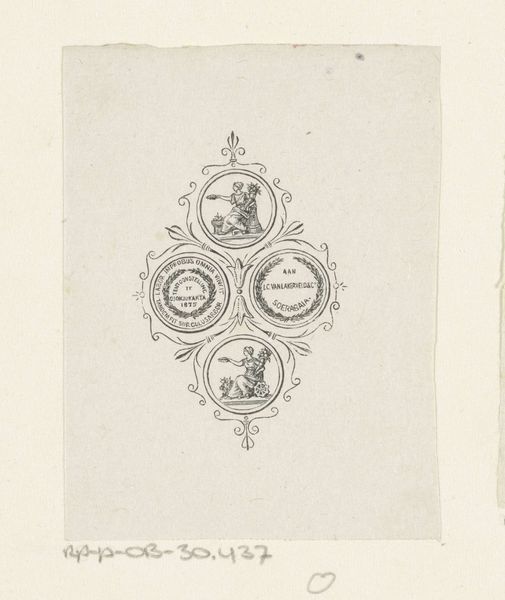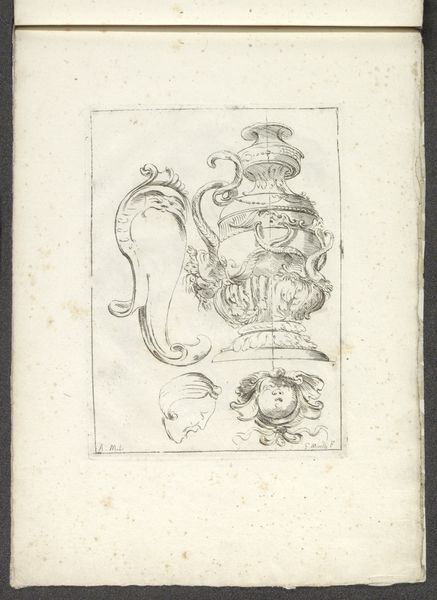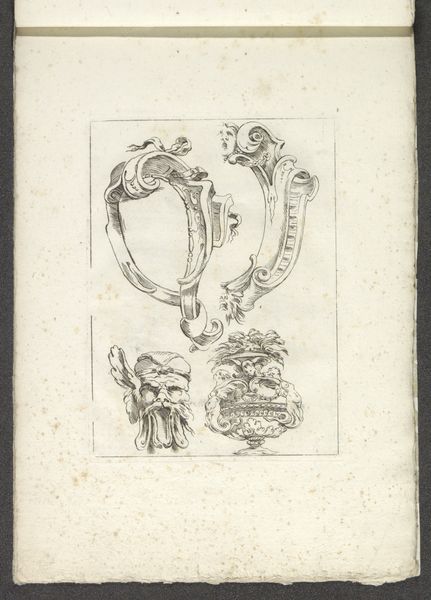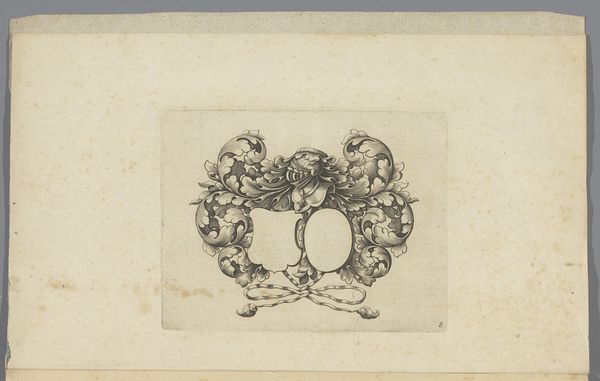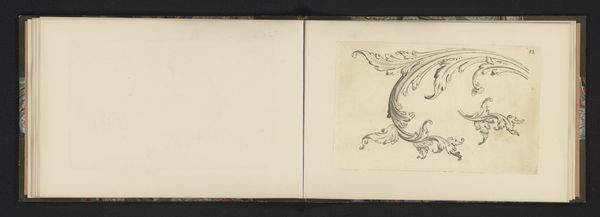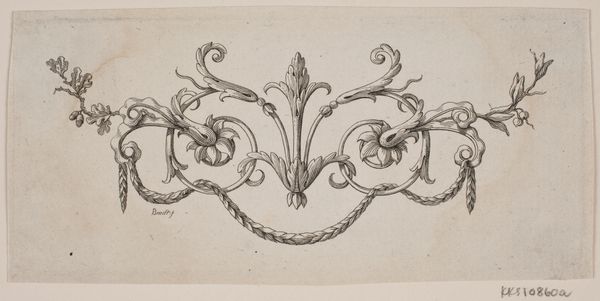
drawing, ink, pen
#
drawing
#
pen drawing
#
pen sketch
#
incomplete sketchy
#
form
#
personal sketchbook
#
ink
#
ink drawing experimentation
#
geometric
#
pen-ink sketch
#
thin linework
#
line
#
pen work
#
sketchbook drawing
#
pen
#
decorative-art
#
sketchbook art
#
rococo
Dimensions: height 190 mm, width 154 mm
Copyright: Rijks Museum: Open Domain
Curator: Here we have a drawing entitled "Vier rocaille schilden," or "Four Rocaille Shields," created sometime between 1704 and 1737 by an anonymous artist. It appears to be a preparatory sketch executed in pen and ink. Editor: They almost look like architectural daydreams. The thin, precise linework makes them seem both solid and ethereal. Is that the complete work, or part of a personal sketchbook? Curator: It seems to be a study. You can see the construction lines lightly sketched in – those circles and crosshairs likely helped the artist maintain symmetry as they designed these ornate cartouches. We are witnessing the artistic process here. Editor: It speaks to the values of that time, doesn't it? Everything so consciously decorative. What purpose were these shields meant to serve? Were they meant as pure ornament? Curator: They could be components for larger decorative schemes, perhaps in interior design or even metalwork. The rocaille style, with its emphasis on asymmetry and naturalistic motifs, was all the rage. Aristocrats, especially, appreciated the artistry and status signaled by these elaborate designs. Editor: And there's something inherently exclusionary about that. All that detail, demanding meticulous handcrafting—it becomes a symbol of concentrated wealth and power, distancing art from everyday life. Curator: It is definitely the expression of its historical moment and power structures, wouldn't you agree? The rococo was often criticized even then for being frivolous and excessive, just think of the French Revolution some decades later. The visual culture shifted from an ornament-rich setting to austerity and classicism. Editor: Seeing these sketches offers a quiet moment of reflection on how taste changes. They prompt questions on whether they embody creativity or just the aesthetic prisons imposed by privilege. Curator: Indeed, observing these evolving visual currents offers insightful views into society's ever-shifting values, even down to such ornate and functional-adjacent artworks. Editor: Looking at these intricate designs and letting oneself fall into their current can open us to see all the small and intricate ways our worlds take shape as the echoes of earlier ones.
Comments
No comments
Be the first to comment and join the conversation on the ultimate creative platform.
